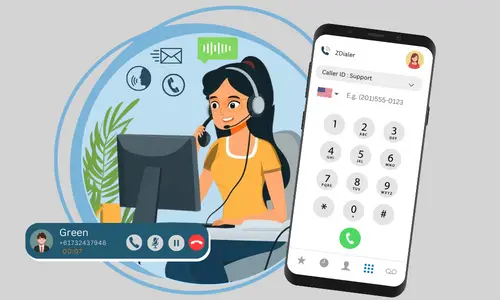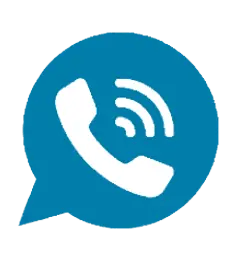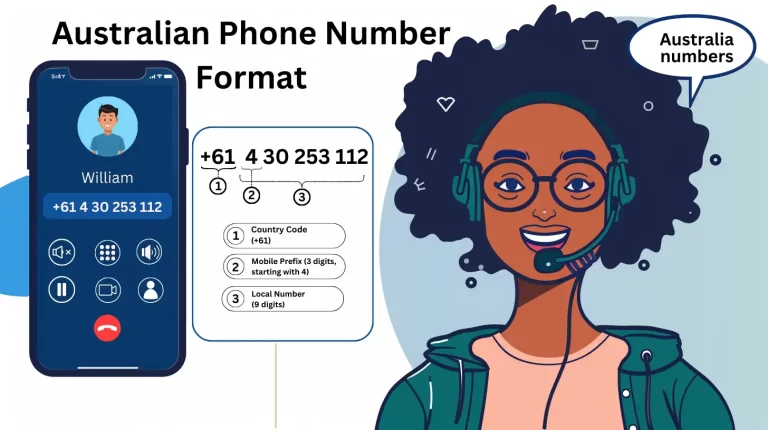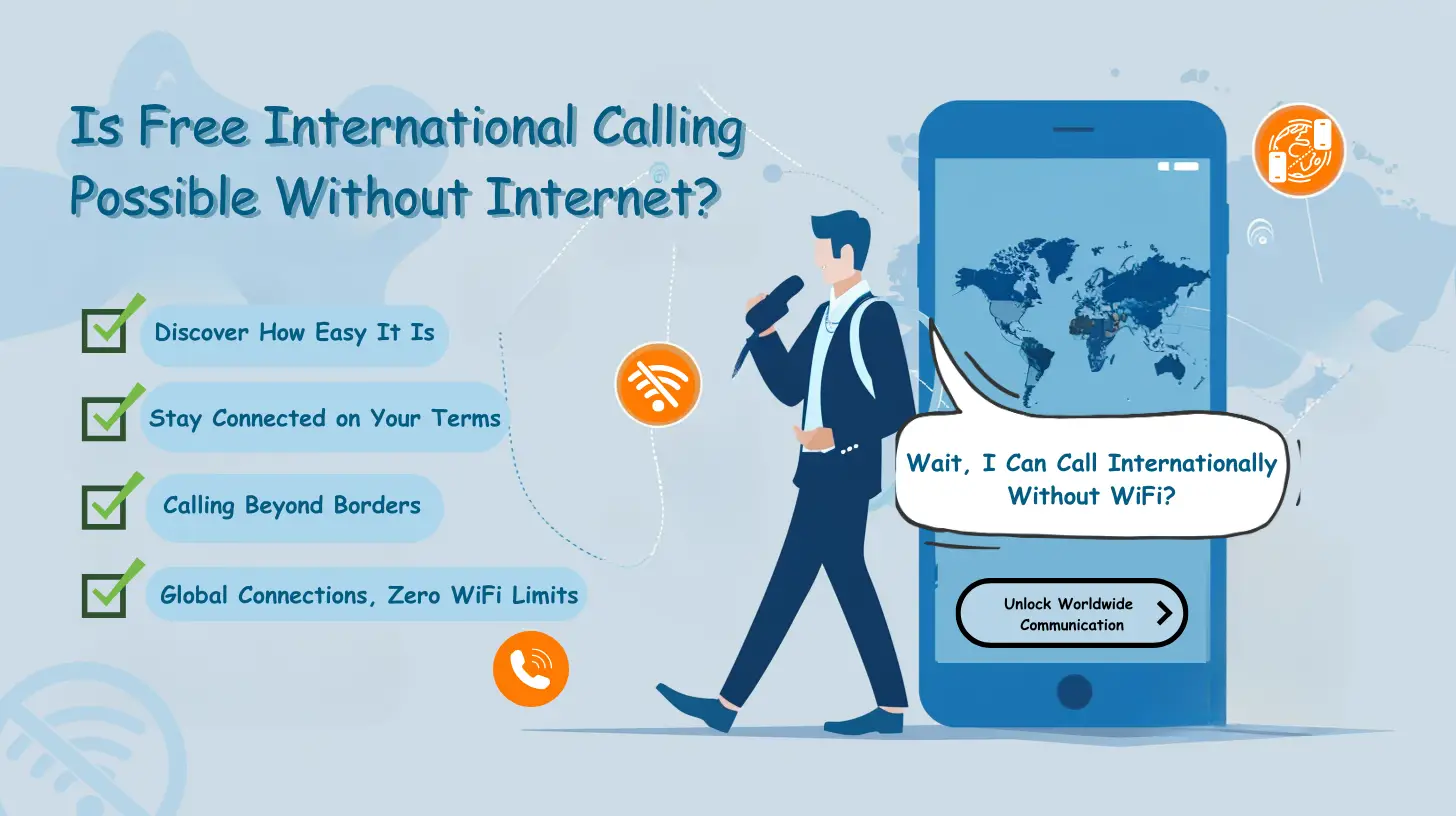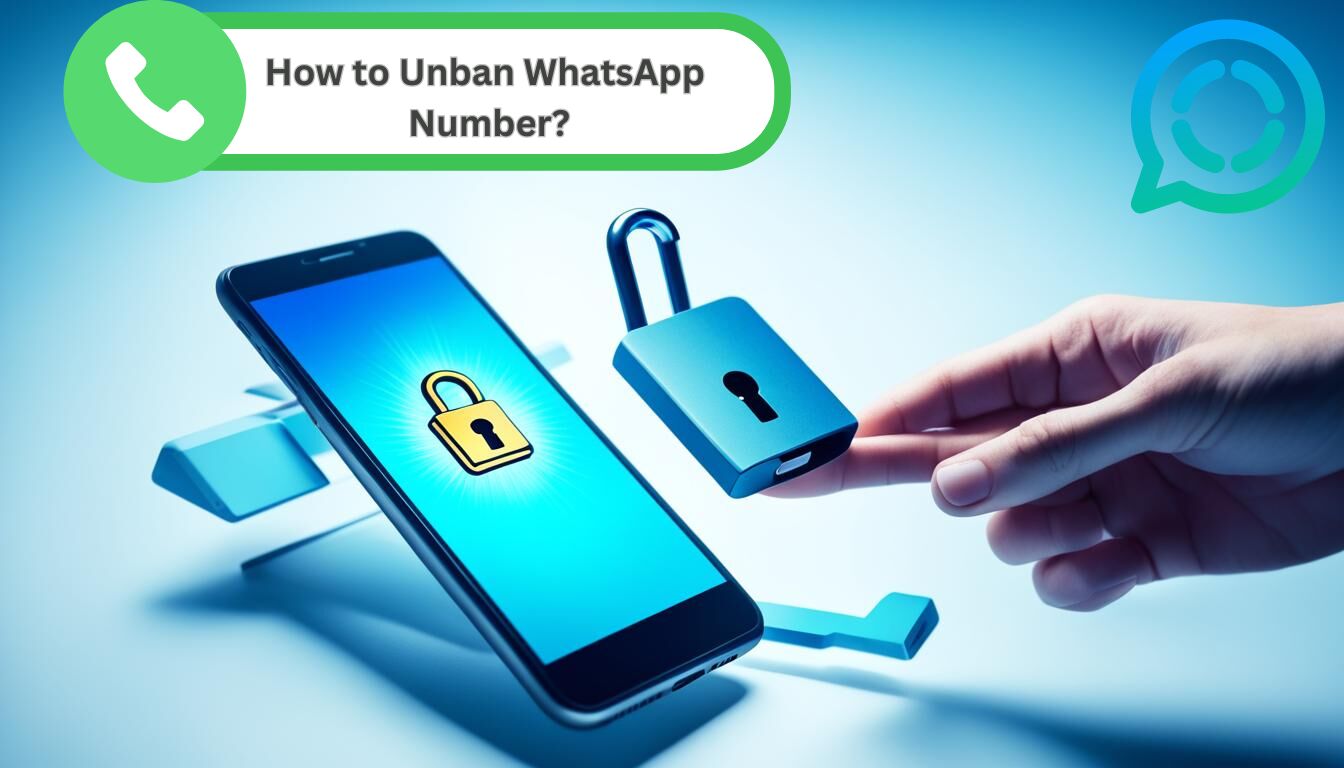In today’s globalized world, effective international communication has become paramount. As businesses expand their reach and individuals connect with friends and family across borders, the ability to seamlessly communicate with people in different countries is crucial. One key aspect of successful international communication is understanding the various phone number formats used around the world.
When it comes to calling Australia from abroad, understanding the Australia phone number format is essential to avoid miscommunication and ensure efficient connections. Australia’s phone number format may differ from what you’re used to in your home country, leading to potential confusion and missed opportunities for business or personal communication.
By familiarizing yourself with the structure of Australian phone numbers, including area codes and mobile prefixes, you can ensure effective communication and strengthen your global connections. Whether for business or personal reasons, mastering the Australia phone number format is a valuable skill in today’s interconnected world.
Calling Australia: Understanding Country Codes and International Dialing
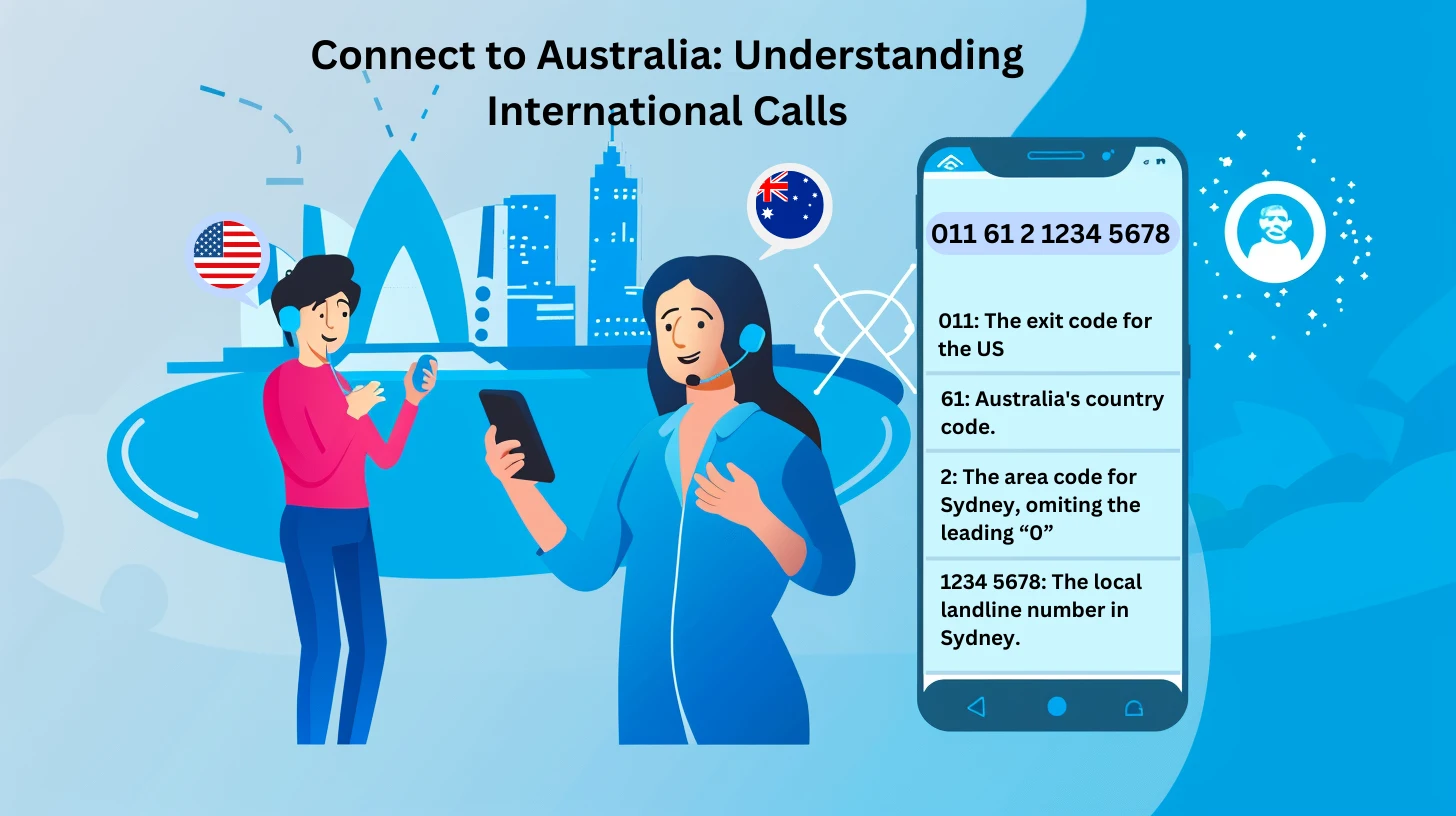
When making international calls to Australia, it’s essential to understand the role of country codes and how they work in conjunction with your home country’s exit code. This section will provide you with a clear understanding of these concepts and guide you through the process of dialing Australian numbers from abroad.
Understanding Country Codes
Every country has a unique country code that serves as an identifier for international calls. These codes are used to route calls to the appropriate country’s telephone network. Australia’s country code is +61. Whenever you dial an Australian number from outside the country, you must start by entering +61 to indicate that you are placing a call to Australia.
The plus sign (+) is a universally recognized symbol that automatically translates to the appropriate exit code based on the country you are calling from. It ensures that your call is correctly routed through the international telephone system.
Exit Codes: Your Home Country’s Key
To initiate an international call, you need to dial your country’s specific “exit code” before entering the destination country code and phone number. The exit code signals to your phone network that the subsequent digits are for an international call, prompting it to connect to the appropriate international telephone exchange.
Exit codes vary by country, so it’s important to familiarize yourself with the code specific to your location. Here are some common exit codes:
- United States and Canada: 011
- United Kingdom: 00
- New Zealand: 00
- Japan: 010
When making an international call, you’ll need to dial your country’s exit code, followed by Australia’s country code (+61), and then the specific Australian phone number you wish to reach.
Example: Calling Sydney from the United States
Let’s walk through an example to illustrate the complete dialing sequence for calling a Sydney landline from the United States.
Suppose the Sydney phone number is (02) 1234 5678. Here’s how you would dial:
011 61 2 1234 5678
Breakdown:
011: The exit code for the United States, indicates an international call.
61: Australia’s country code, signifying that the call is being directed to Australia.
2: The area code for Sydney, omitting the leading “0”.
1234 5678:The local landline number in Sydney.
By following this dialing sequence, your call will be correctly routed from the United States to the specified Sydney landline.
It’s important to note that when calling Australian mobile numbers, you should use the same format but replace the area code with the mobile prefix “4” followed by the eight-digit mobile number.
Understanding country codes and exit codes is crucial for making successful international calls to Australia. By familiarizing yourself with these concepts and the correct dialing sequence, you can ensure that your calls are efficiently connected to the intended Australian recipient.
Remember to always start with your country’s exit code, followed by Australia’s country code (+61), and then the specific Australian phone number. With this knowledge, you’ll be well-equipped to communicate with contacts in Australia, whether for personal or professional purposes.
Demystifying the Australian Phone Number Format
Define the Australian phone number format and its components
The Australian phone number format consists of three main components: the country code, area code, and local phone number. Each component serves a specific purpose in routing calls to the correct destination. Let’s take a closer look at each component.
Country Code
The country code for Australia is +61. This code is used when dialing Australian phone numbers from outside the country. It identifies the call as an international call and ensures that it is routed to the Australian telephone network. When calling Australia from abroad, you must prefix the phone number with the country code.
Area Code
Area codes in Australia are geographic codes that identify the region or city of the phone number. They are used to route calls to the appropriate regional telephone exchange. Australia has several area codes, with each code covering a specific geographic area. Some examples of major city area codes include:
02: New South Wales (NSW) and Australian Capital Territory (ACT)
03: Victoria (VIC) and Tasmania (TAS)
07: Queensland (QLD)
08: Western Australia (WA), South Australia (SA), and Northern Territory (NT)
When calling within Australia, you must include the area code before the local phone number.
Local Phone Number
The local phone number is the unique identifier for a specific phone line within a designated area code. In Australia, the length of the local phone number differs for landlines and mobile phones:
Landlines: 8 digits (XXXX XXXX)
Mobile phones: 9 digits (XXX XXX XXX), always starting with a “4”
The local phone number is dialed after the area code when making calls within Australia.
Illustrating the format with visuals
To better understand the Australian phone number format, let’s visualize it using a table and an example:
| Component | Landline Format | Mobile Format |
|---|---|---|
| Country Code | +61 | +61 |
| Area Code | XX | 4XX |
| Local Number | XXXX XXXX | XXX XXX |
Example:
Landline in Sydney: +61 2 1234 5678
Mobile phone: +61 412 345 678
Here’s an infographic that illustrates the Australian phone number format:

By understanding the components and format of Australian phone numbers, you can ensure accurate dialing and effective communication when making calls to or within Australia. Remember to include the country code when dialing from abroad, and always use the appropriate area code and local phone number format for landlines and mobile phones.
Step-by-Step Guide to Calling Australia
Calling Australia from another country may seem daunting at first, but with a clear understanding of the dialing process and phone number format, it becomes a simple task. In this section, we’ll walk you through the steps involved in dialing an Australian landline and provide a complete example.
Dialing an Australian Landline

To call an Australian landline from outside the country, follow these step-by-step instructions:
1. Dial your country’s exit code
The first step is to dial your country’s international exit code. This code indicates that you are making an international call. The exit code varies by country, but some common examples include:
States and Canada: 011
United Kingdom: 00
New Zealand: 00
Japan: 010
2. Dial Australia’s Country Code
After the exit code, dial Australia’s country code, which is +61. This code identifies the call as being directed to Australia.
3. Dial the relevant Area Code
Next, dial the area code for the region you are calling. Australia uses geographic area codes, which are typically one or two digits long. Some common area codes include:
- 02: New South Wales (NSW) and Australian Capital Territory (ACT)
- 03: Victoria (VIC) and Tasmania (TAS)
- 07: Queensland (QLD)
- 08: Western Australia (WA), South Australia (SA), and Northern Territory (NT)
Note: When dialing from outside Australia, you should omit the leading “0” from the area code. For example, if the area code is 02, you would dial 2.
4. Dial the local landline number
Finally, dial the local landline number, which consists of 8 digits. This number is specific to the person or business you are trying to reach.
Complete Example
Let’s put these steps together with a complete example. Suppose you are calling a landline in Canberra, Australia, from the United States. The phone number is (02) 1234 5678.
Here’s how you would dial:
011 61 2 1234 5678
Breakdown:
- 011: United States exit code
- 61: Australia’s country code
- 2: Area code for Canberra (ACT), omitting the leading “0”
- 1234 5678: Local landline number
By following these steps and ensuring you have the correct area code and local number, you can easily make a call to any Australian landline from outside the country.
Remember to consider the time difference between your location and Australia when placing a call, as Australia spans multiple time zones. It’s also a good idea to familiarize yourself with the costs associated with international calls to avoid any unexpected charges.
Additional Tips and Considerations
When calling Australia, there are a few common mistakes to avoid and alternative options to consider. In this section, we’ll discuss these aspects to ensure a smooth and successful calling experience.
Common Mistakes to Avoid
Incorrect order of codes
One of the most common mistakes when dialing an Australian number is mixing up the order of the codes. Remember to dial the exit code first, followed by the country code, area code, and local number. Failing to follow this sequence can result in a failed call attempt.
Forgetting the “+” symbol for mobile numbers
When dialing an Australian mobile number from abroad, it’s crucial to include the “+” symbol before the country code. The “+” symbol is an internationally recognized prefix that automatically translates to the appropriate exit code based on the country you are calling from. Omitting the “+” symbol can lead to dialing errors.
Including the leading “0” in the area code
When dialing an Australian landline from outside the country, you should omit the leading “0” from the area code. For example, if the area code is 02, you would dial 2 after the country code. Including the “0” can result in the call not being connected.
Neglecting time zone differences
Australia spans multiple time zones, so it’s essential to consider the time difference between your location and the region you are calling. Failing to account for time zone differences can lead to calling at inconvenient or inappropriate hours.
Alternative Options for International Calls
In addition to traditional phone calls, there are alternative options for making international calls to Australia:
Voice Over Internet Protocol (VoIP) Services
VoIP services like Skype, WhatsApp, or Viber allow you to make calls using an internet connection instead of a traditional phone line. These services often offer affordable or even free international calls, making them a cost-effective alternative.
International Calling Cards
Prepaid international calling cards can be a convenient option for making calls to Australia. These cards provide a specific amount of calling time at a fixed rate, allowing you to control your expenses.
International Calling Plans
Some mobile phone providers offer international calling plans that include discounted rates for calls to Australia. Check with your provider to see if they have any suitable plans for your needs.
While these alternative options can be convenient and cost-effective, it’s important to keep in mind their limitations. VoIP services rely on a stable internet connection, so call quality may be affected by network issues. International calling cards and plans may have certain restrictions or hidden fees, so it’s essential to read the terms and conditions carefully.
When considering alternative options, assess your specific needs and preferences. If you frequently make calls to Australia and require a reliable connection, traditional phone calls using the correct dialing format may be the most suitable choice.
By being aware of common mistakes and exploring alternative options, you can ensure a smooth and efficient experience when calling Australia from abroad. Remember to double-check the codes, consider time zone differences, and choose the most appropriate method for your needs.
Understanding Area Codes
Area codes are an essential component of the Australian phone number format. They play a crucial role in routing calls to the correct geographic region within the country. In this section, we’ll delve into the purpose and significance of area codes and provide a list of commonly used codes and their corresponding cities.
Purpose and Significance of Area Codes
In Australia, area codes are used to identify the geographic region or city associated with a particular phone number. They help the telephone network determine the destination of a call and route it to the appropriate regional telephone exchange.
When a call is placed within Australia, the area code is used to direct the call to the correct region, even if the caller is in a different part of the country. For example, if you are in Melbourne (area code 03) and you want to call a number in Sydney (area code 02), you would need to dial the appropriate area code before the local number to ensure the call is routed correctly.
Area codes are an essential part of the Australian phone number format, and they are required when dialing any landline number within the country. They are not necessary when dialing mobile numbers, as mobile numbers have their own unique prefix (4XX) that identifies them as mobile numbers.
It’s important to note that some area codes cover a wide geographic area, while others are specific to a particular city or region.
For example, the area code 02 covers both New South Wales (NSW) and the Australian Capital Territory (ACT), while the area code 03 is used for Victoria (VIC) and Tasmania (TAS).
Commonly Used Area Codes and Corresponding Cities
Here is a table of commonly used area codes in Australia and their corresponding cities or regions:
| Area Code | City/Region |
|---|---|
| 02 | New South Wales (NSW), Australian Capital Territory (ACT) |
| 03 | Victoria (VIC), Tasmania (TAS) |
| 07 | Queensland (QLD) |
| 08 | Western Australia (WA), South Australia (SA), Northern Territory (NT) |
Some specific examples of cities and their area codes:
- Sydney (NSW): 02
- Melbourne (VIC): 03
- Brisbane (QLD): 07
- Perth (WA): 08
- Adelaide (SA): 08
- Canberra (ACT): 02
- Hobart (TAS): 03
- Darwin (NT): 08
When making a call to a landline in Australia, it’s crucial to use the correct area code based on the region you are trying to reach. This ensures that your call is routed efficiently and reaches the intended recipient.
By understanding the purpose and significance of area codes and familiarizing yourself with the commonly used codes and their corresponding cities, you can navigate the Australian telephone system with ease and make calls with confidence.
Beyond the Basics: Advanced Considerations
While understanding the Australian phone number format is essential for making calls to Australia, there are some advanced considerations to keep in mind. In this section, we’ll explore the use of virtual phone numbers, discuss potential communication challenges related to time zones and language, and touch on etiquette considerations for business calls.
Using Virtual Phone Numbers
Virtual phone numbers provide an alternative way to communicate with Australia cost-effectively. A virtual phone number is a telephone number that is not tied to a specific phone line or device. Instead, it forwards calls to a pre-designated phone number or VoIP (Voice over Internet Protocol) service.
By using a virtual phone number with an Australian area code, you can establish a local presence in Australia without physically being there. This can be particularly useful for businesses looking to expand their reach or individuals who frequently communicate with contacts in Australia.Virtual phone numbers offer several advantages:
- Cost savings: Virtual numbers often come with competitive calling rates, making it more affordable to make and receive calls to and from Australia.
- Flexibility: You can choose a virtual number with a specific area code, allowing you to establish a local presence in a particular region of Australia.
- Portability: Virtual numbers can be accessed from anywhere with an internet connection, making it convenient to stay connected while traveling or working remotely.
When considering virtual phone numbers, research different providers and compare their features, pricing, and reliability to find the best solution for your needs.
Overcoming Time Zone and Language Challenges
Australia is a vast country that spans multiple time zones, and minor language variations can exist. Being mindful of these factors ensures smooth communication and avoids scheduling mishaps or misunderstandings.
To overcome time zone challenges:
- Use online tools or apps to quickly convert time zones and find suitable times for both parties.
- Be flexible and willing to accommodate the other party’s preferred time slots.
- Communicate the agreed-upon time and time zone to avoid confusion.
To navigate language barriers:
- Speak clearly and at a moderate pace to ensure better comprehension.
- Use simple language, avoiding jargon or idioms that may not translate well.
- Be patient and prepared to rephrase or clarify if necessary.
- If the language barrier proves significant, consider enlisting the help of a translator or interpreter.
Etiquette Considerations for Business Calls
When calling Australia for business purposes, it’s important to be mindful of certain etiquette considerations to foster positive and professional relationships:
- Introductions: Start the call with a clear introduction of yourself and your company.
- Timing: Be respectful of Australian business hours. Avoid calling outside of typical working times unless you have a prior agreement.
- Formality: Australians generally have a relaxed business culture. Adopt a friendly and conversational tone while maintaining professionalism.
- Active Listening: Pay close attention to the other person. Show genuine interest in their responses and concerns.
- Follow-up: After the call, recap key points discussed and any agreed-upon actions in a follow-up email. This demonstrates commitment and clear communication.
By considering these advanced aspects, such as virtual phone numbers, time zones, language barriers, and business etiquette, you can enhance your communication with Australian contacts and build stronger, more effective relationships.
Troubleshooting Common Issues
When calling Australia, you may occasionally encounter issues such as calls not connecting or reaching the wrong number. These problems can be frustrating and hinder effective communication. In this section, we’ll address some frequently encountered issues and provide troubleshooting tips to help you resolve them.
Calls Not Connecting
One common issue is calls failing to connect or continuously ringing without being answered. If you experience this problem, consider the following troubleshooting steps:
- Check the phone number: Ensure that you have dialed the correct phone number, including the country code, area code, and local number. Double-check each digit to rule out any typing errors.
- Verify the country and area codes: Confirm that you are using the correct country code for Australia (+61) and the appropriate area code for the region you are calling.
- Include the necessary prefixes: If you are calling from a mobile phone, make sure to include the “+” symbol before the country code. If calling from a landline, dial the international exit code for your country before the country code.
- Check Your Phone Plan: Verify that your phone plan includes international calling or that you have sufficient credit to make the call. Contact your service provider if you are unsure about your plan’s international calling capabilities.
- Retry The Call: If the call fails to connect on the first attempt, try calling again after a few minutes. Sometimes, temporary network issues or congestion can cause connection problems.
- Use An Alternative Method: If you consistently have trouble connecting, consider using an alternative method such as a VoIP service or a virtual phone number to make the call.
Reaching the Wrong Number
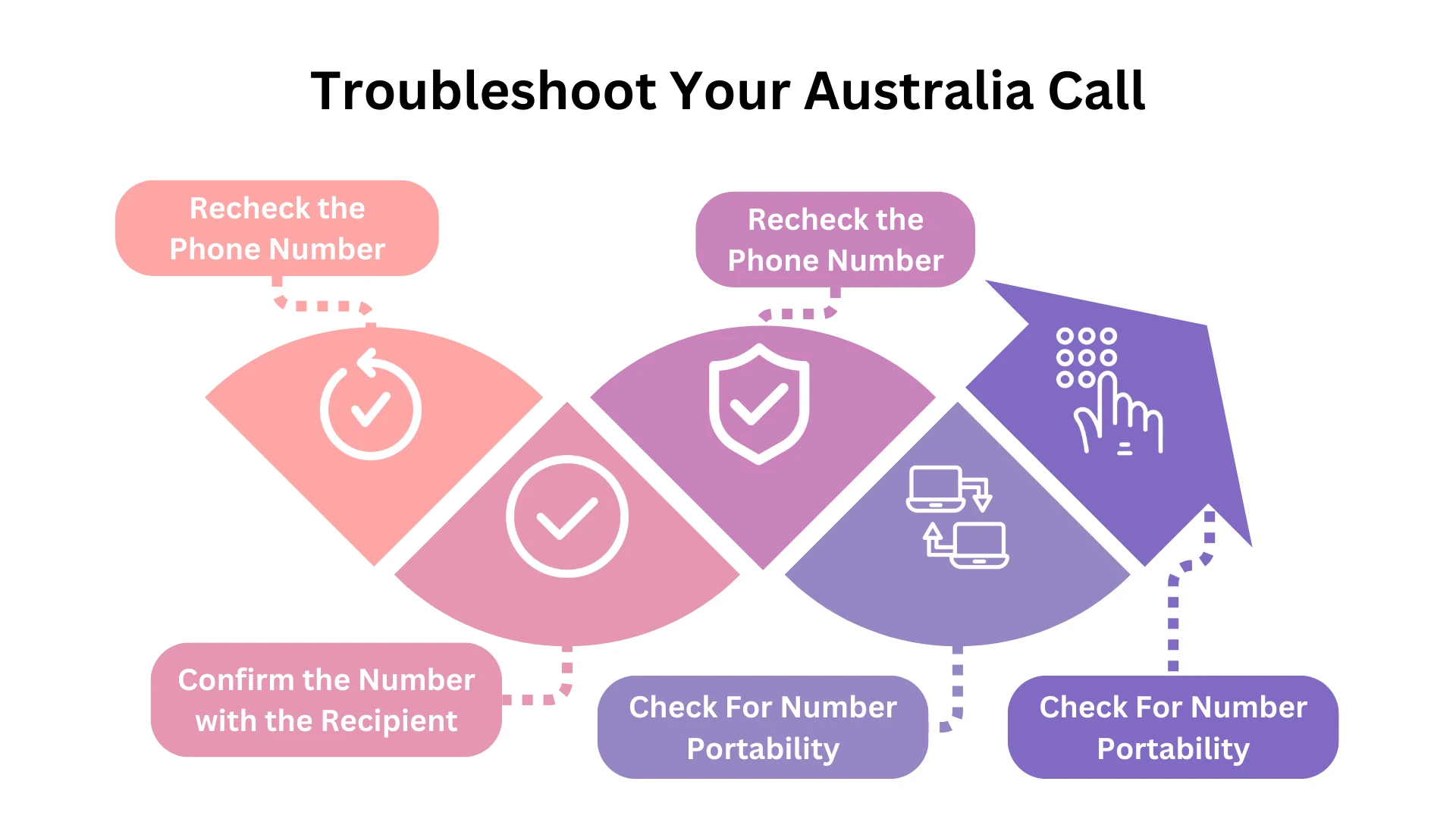
Another frustrating issue is when you successfully connect a call but reach the wrong person or get an error message indicating an invalid number. To troubleshoot this problem:
- Recheck the Phone Number: Carefully review the phone number you dialed to ensure it is correct. Pay close attention to the area code and local number.
- Confirm the Number with the Recipient: If possible, double-check the phone number with the intended recipient through an alternative means of communication, such as email or messaging, to ensure you have the correct number.
- Verify The Area Code: Make sure you are using the appropriate area code for the specific region in Australia you are trying to reach. Remember that some area codes cover multiple regions or cities.
- Check For Number Portability: In some cases, phone numbers may have been ported from one service provider to another. If you are certain you have the right number but still reach the wrong person, the number might have been ported. Contact the intended recipient to confirm if they have recently changed providers or if their number has been ported.
- Dial the Number Directly: If you are using a virtual phone number or a VoIP service, try dialing the Australian phone number directly from a regular phone line to rule out any issues with the virtual service.
If you have exhausted all troubleshooting steps and still cannot connect or reach the intended recipient, it may be necessary to contact your phone service provider for further assistance. They can help identify any technical issues on their end and provide additional support.
By being aware of these common issues and following the troubleshooting tips provided, you can minimize the chances of encountering problems when calling Australia. Remember to double-check phone numbers, verify area codes, and ensure you have the necessary prefixes and permissions to make international calls. With persistence and attention to detail, you can successfully connect with your Australian contacts.
Best Times to Call Australia
Australia spans multiple time zones, making it essential to consider the local time when scheduling calls with Australian businesses or individuals. Choosing the right time can increase the chances of connecting successfully and having productive conversations.
Australia has three main time zones:
- Australian Eastern Standard Time (AEST)
- Australian Central Standard Time (ACST)
- Australian Western Standard Time (AWST)
Daylight Saving Time (DST) can also be in effect in some areas, adding an additional hour to the standard time.Here’s a breakdown of the best times to call Australia from several common countries to maximize the likelihood of reaching your contacts during their standard business hours:
From the US
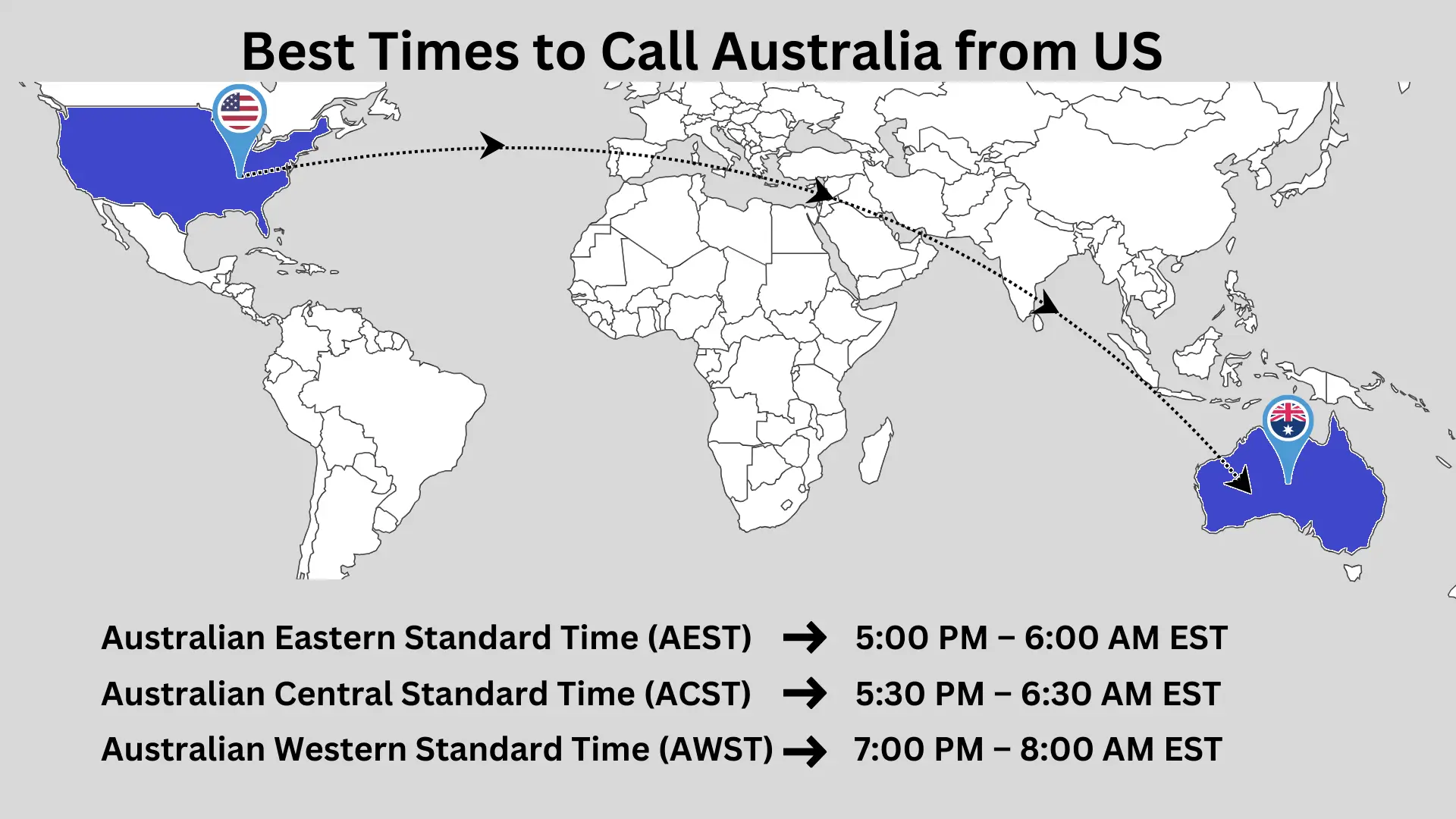
| US Time Zone | Australia Time Zone | Best Time to Call (Standard Time) |
|---|---|---|
| Eastern Time Zone (EST) | Australian Eastern Standard Time (AEST) | 5:00 PM – 6:00 AM |
| Australian Central Standard Time (ACST) | 5:30 PM – 6:30 AM | |
| Australian Western Standard Time (AWST) | 7:00 PM – 8:00 AM |
From the UK
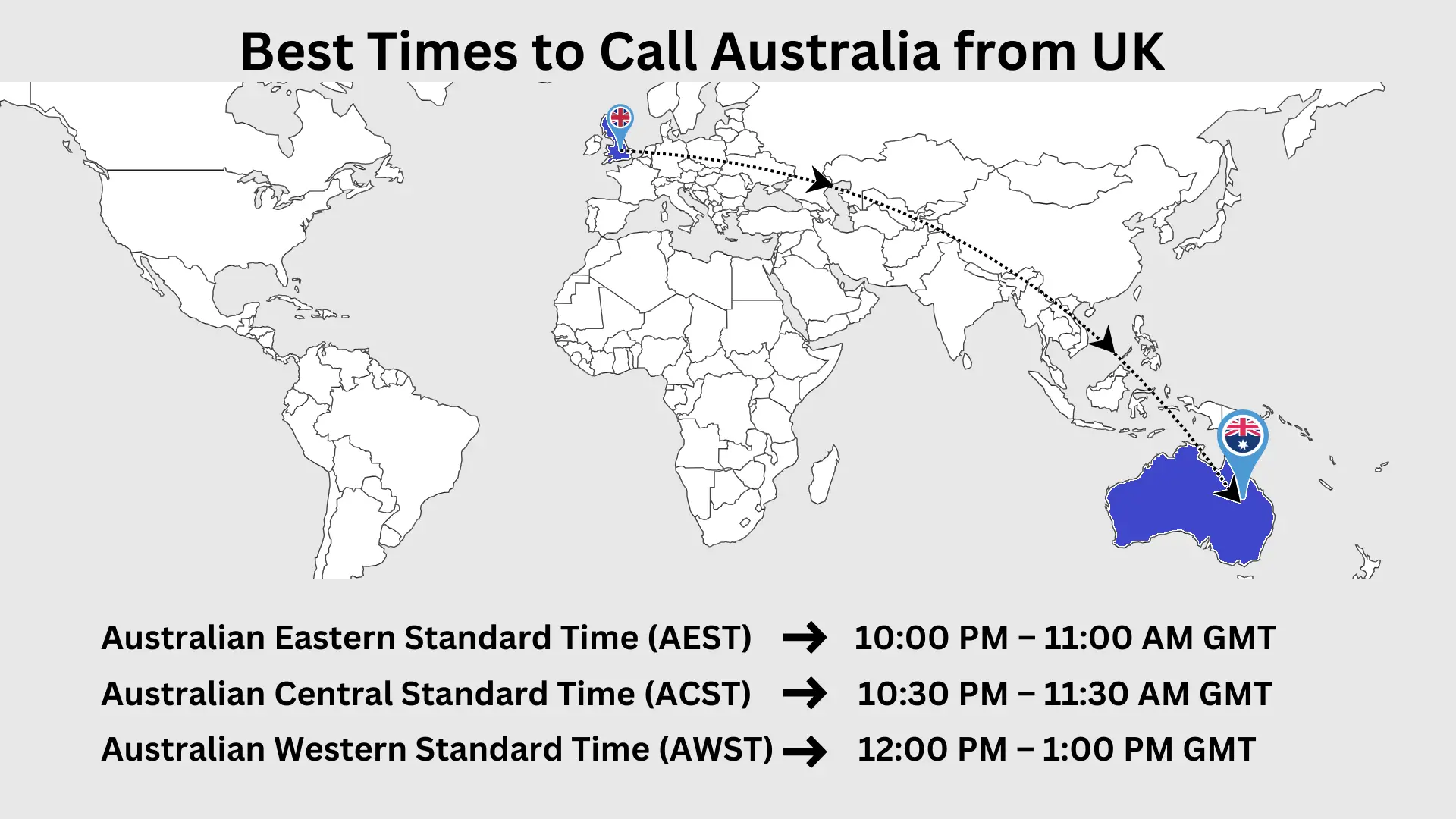
| UK Time Zone | Australia Time Zone | Best Time to Call (Standard Time) |
|---|---|---|
| Greenwich Mean Time (GMT) | Australian Eastern Standard Time (AEST) | 10:00 PM – 11:00 AM |
| Australian Central Standard Time (ACST) | 10:30 PM – 11:30 AM | |
| Australian Western Standard Time (AWST) | 12:00 PM – 1:00 PM |
From India
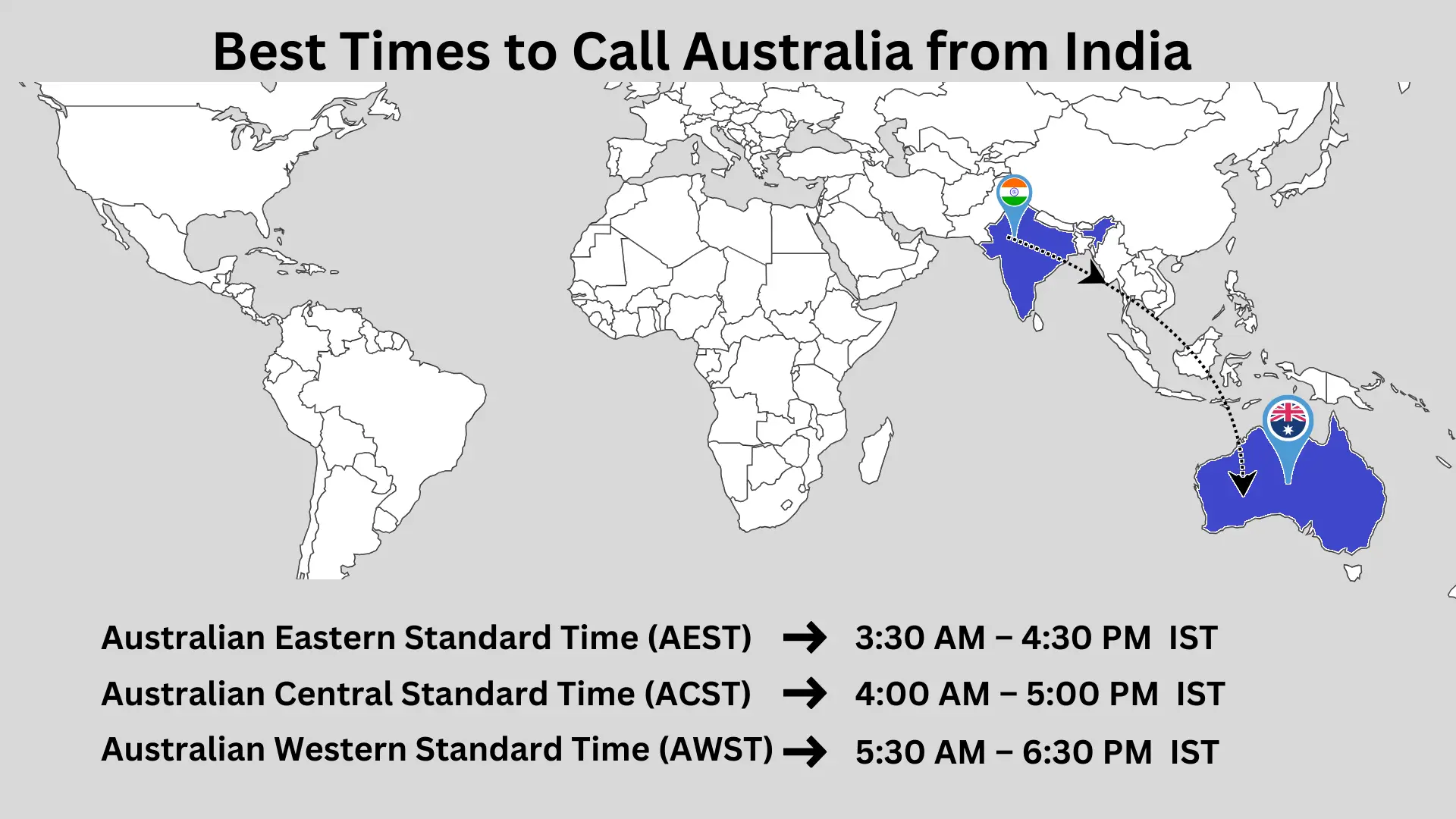
| India Time Zone | Australia Time Zone | Best Time to Call (Standard Time) |
|---|---|---|
| Indian Standard Time (IST) | Australian Eastern Standard Time (AEST) | 3:30 AM – 4:30 PM |
| Australian Central Standard Time (ACST) | 4:00 AM – 5:00 PM | |
| Australian Western Standard Time (AWST) | 5:30 AM – 6:30 PM |
Important Note:
Always confirm the specific time zone of your contact in Australia and be respectful of standard business hours when scheduling calls.
By understanding Australian time zones and choosing appropriate times to call, you can overcome potential scheduling mishaps and foster smooth communication for positive interactions and successful outcomes.
Why Mastering the Australian Phone Number Format Matters
Efficient Call Routing
Understanding the correct Australian phone number format plays a crucial role in ensuring efficient call routing. When dialing a phone number using the proper format, you can confidently connect with the intended recipient without experiencing delays or misconnections.
The format phone number for Australia consists of the country code (+61), area code (1 or 2 digits), and local number (8 digits). The country code identifies the call as international, the area code routes it to the correct geographic region, and the local number connects to the specific phone line. When combined correctly (+61 X XXXX XXXX), the telephone network efficiently processes and routes the call to the intended recipient in Australia.
The country code, +61, identifies the call as an international call destined for Australia. Including the correct country code ensures that your call is routed through the appropriate international gateways and reaches the Australian telephone network.
Area codes in Australia are based on geographic regions, such as states or cities. For example, Sydney uses the area code 2, while Melbourne uses 3. By including the correct area code, your call is directed to the appropriate regional telephone exchange.
The eight-digit local number identifies the specific phone line within the designated area code. Accurately providing the local number is essential for connecting to the intended recipient.
When these components are combined in the correct format (+61 X XXXX XXXX), the telephone network can efficiently process and route your call to the desired destination.
Misformatting or omitting any part of the phone number can lead to call routing failures, resulting in wasted time and resources. For instance, forgetting to include the country code or dialing an incorrect area code may cause your call to fail or be directed to the wrong region.
In business contexts, efficient call routing is particularly important. Misrouted calls can result in missed opportunities, frustrated customers, and potential financial losses. By mastering the Australian phone number format, businesses can ensure smooth communication with their Australian clients, partners, or colleagues, enhancing productivity and fostering professional relationships.
Understanding the proper format saves time and effort. Instead of struggling with incorrect phone numbers or spending valuable time troubleshooting connection issues, you can confidently dial Australian phone numbers and connect with your intended recipients on the first attempt.
Mastering the Australian phone number format is crucial for efficient call routing. By including the correct country code, area code, and local number, you ensure that your calls are directed to the intended recipient without delays or misconnections. This knowledge saves time, resources, and frustration while promoting effective communication in both personal and professional settings.
Market Expansion and Business Growth
For companies looking to expand their presence in the Australian market or serve Australian clients, understanding the local phone number format is crucial. Proper communication is the foundation of successful business relationships, and avoiding communication breakdowns is essential to capitalize on growth opportunities.
When entering a new market, businesses must adapt to local communication standards and conventions. In Australia, this includes mastering the phone number format. Failing to understand and use the correct format can lead to several issues that hinder business growth:
- Missed Connections:
Incorrectly formatted phone numbers can result in failed call attempts, preventing businesses from reaching their Australian clients or partners. This can lead to missed opportunities, as potential clients may perceive the company as unprofessional or unreliable. - Inefficient Communication: Communication breakdowns due to incorrect phone number formatting can cause delays in business transactions, negotiations, and customer support. This inefficiency can strain business relationships and negatively impact productivity.
- Reputational Damage: Consistently using incorrect phone number formats can damage a company’s reputation in the Australian market. It may convey a lack of attention to detail or a poor understanding of local business practices, which can deter potential clients or partners from engaging with the company.
To avoid these pitfalls and foster successful business growth in Australia, companies must prioritize understanding and using the correct phone number format. This involves educating employees, updating contact information on marketing materials and websites, and ensuring that all communication channels adhere to the standard format.
By demonstrating a commitment to effective communication and attention to local standards, businesses can establish a positive reputation in the Australian market. This can lead to increased trust, improved client relationships, and ultimately, business growth.Understanding the Australian phone number format enables businesses to efficiently connect with local suppliers, vendors, and industry partners. Smooth communication with these key stakeholders is essential for navigating the complexities of a new market and establishing a strong presence.
In addition to mastering the phone number format, businesses should also be aware of the local business etiquette and communication preferences in Australia. This cultural awareness, combined with the ability to effectively connect via phone, can give companies a competitive edge in the market.
Investing in understanding and adhering to the Australian phone number format is a small but significant step in ensuring successful market expansion and business growth. By prioritizing effective communication and demonstrating a commitment to local standards, companies can build strong relationships, capitalize on opportunities, and thrive in the Australian business landscape.
Improved Customer Support
Providing excellent customer support is a key factor in building strong relationships with Australian customers and fostering long-term business success. Understanding and using the correct Australian phone number format plays a crucial role in delivering seamless support experiences.
When businesses have a solid grasp of the Australian phone number format, they can efficiently connect with customers and address their concerns. This is particularly important for customer support teams, who often need to make outbound calls to customers to resolve issues or provide assistance.
By using the correct phone number format, customer support representatives can reach customers directly, without the frustration of misdialed numbers or connection failures. This efficiency saves time and allows support teams to handle a higher volume of customer inquiries, ultimately improving the overall support experience.
Understanding the phone number format enables businesses to establish a local presence in Australia, even if they are based overseas. By providing Australian phone numbers for customer support, companies can create a sense of proximity and availability, which is essential for building trust with customers.
When customers can easily reach a business using a familiar phone number format, they are more likely to feel valued and confident in the company’s ability to address their needs. This trust is further reinforced when customer support representatives demonstrate a clear understanding of local communication standards and preferences.
In addition to making outbound calls, businesses must also ensure that their customer support hotlines or contact numbers are properly formatted and easily accessible to Australian customers. This includes prominently displaying the correct phone number format on websites, marketing materials, and product documentation.
By providing clear and accurate contact information, businesses can encourage customers to reach out for support when needed. This proactive approach to customer support can help prevent minor issues from escalating into major problems, ultimately improving customer satisfaction and loyalty.
Understanding the Australian phone number format allows businesses to segment their customer support based on geographic regions. By recognizing area codes, support teams can quickly identify the location of a customer and tailor their support approach accordingly. This level of personalization can greatly enhance the customer experience and demonstrate a commitment to understanding local needs and preferences.
In today’s competitive business landscape, providing exceptional customer support is a key differentiator. By mastering the Australian phone number format and using it effectively in customer support operations, businesses can create seamless experiences that build trust, foster loyalty, and ultimately drive long-term success in the Australian market.
Building Stronger Relationships
Understanding and using the correct Australian toll free number format is not just a technical necessity; it also plays a significant role in fostering stronger professional and personal relationships with Australian contacts. By demonstrating a commitment to local communication practices, businesses and individuals can show respect for Australian culture and facilitate smoother interactions.
In professional settings, using the correct phone number format is a sign of attention to detail and cultural awareness. When reaching out to Australian clients, partners, or colleagues, taking the time to ensure that phone numbers are properly formatted demonstrates a level of professionalism and respect for local norms.
This attention to detail can help establish a positive first impression and set the tone for future interactions. It shows that the business values the relationship and is willing to invest the effort to communicate effectively. In contrast, consistently using incorrect phone number formats can convey a lack of care or cultural sensitivity, potentially straining professional relationships.
Understanding the Australian phone number format can facilitate smoother communication and reduce the risk of misunderstandings. When phone numbers are correctly formatted, calls are more likely to connect on the first attempt, avoiding the frustration and wasted time associated with misdialed numbers or connection issues.
Smooth communication is essential for building trust and fostering long-term professional relationships. When Australian contacts can reliably reach a business or individual using a familiar phone number format, they are more likely to view the relationship as dependable and efficient.
In addition to professional settings, understanding the Australian phone number format is equally important for personal relationships. When connecting with friends, family, or acquaintances in Australia, using the correct format demonstrates a level of cultural awareness and respect.
By taking the time to learn and use the local phone number format, individuals show that they value the relationship and are willing to bridge cultural gaps. This effort can help build stronger personal connections and facilitate more meaningful interactions.
Using the correct phone number format can help avoid confusion or miscommunication in personal relationships. When phone numbers are properly formatted, there is less risk of misdialing or reaching the wrong person, ensuring that personal conversations and plans are not derailed by technical issues.
In today’s globalized world, building strong professional and personal relationships across borders is more important than ever. By mastering the Australian toll free number format and using it consistently, businesses and individuals can demonstrate cultural sensitivity, facilitate smooth communication, and foster stronger connections with their Australian contacts.
Investing the time to understand and use the correct phone number format is a small but significant gesture that can have a lasting impact on the quality and depth of professional and personal relationships with Australians.
Conclusion
In this comprehensive guide, we have explored the intricacies of the Australian phone number format and its importance for effective communication. Understanding this format is crucial for anyone looking to connect with individuals or businesses in Australia, whether for personal or professional reasons.
To recap, the key takeaways from this guide are:
- The Australian phone number format consists of a country code (+61), area code (1 or 2 digits), and local number (8 digits for landlines, 9 digits for mobile phones).
- Area codes play a vital role in routing calls to the correct geographic region within Australia. Familiarizing yourself with the commonly used area codes and their corresponding cities can help you navigate the Australian telephone system effectively.
- When calling Australia from abroad, you must dial the international exit code followed by Australia’s country code, area code, and local number. Omit the leading “0” from the area code when dialing from outside Australia.
- Mobile phone numbers in Australia have a distinct format, starting with the prefix “4” followed by 9 digits.
- Effective communication with Australia requires considering factors such as time zones, language barriers, and business etiquette. Being mindful of these aspects can help you build strong and professional relationships.
- Virtual phone numbers and VoIP services offer alternative solutions for cost-effective international communication with Australia.
- Common issues like calls not connecting or reaching the wrong number can be resolved through careful troubleshooting, such as double-checking phone numbers, verifying area codes, and ensuring the necessary prefixes are used.
By mastering the Australian phone number format and understanding the nuances of international communication, you can unlock the door to seamless connections and successful collaborations with your Australian counterparts. Whether you are expanding your business into the Australian market, maintaining personal relationships, or exploring new opportunities, being well-versed in the proper phone number format is an essential skill.
We encourage you to put this knowledge into practice and start building meaningful connections with Australia. If you have any experiences to share or questions that haven’t been addressed in this guide, please feel free to leave a comment below. We value your feedback and are here to support you in your journey to effective communication with Australia.
In today’s globalized world, the ability to communicate across borders is a valuable asset. By taking the time to understand and master the Australian phone number format, you are investing in your personal and professional growth and opening up new possibilities for collaboration and success.
When considering alternative options, assess your specific needs and preferences. If you frequently make calls to Australia and require a reliable connection, traditional phone calls using the correct dialing format may be the most suitable choice.By being aware of common mistakes and exploring alternative options, you can ensure a smooth and efficient experience when calling Australia from abroad. Remember to double-check the codes, consider time zone differences, and choose the most appropriate method for your needs.
FAQ's
The international format for calling an Australian phone number is +61 (country code) followed by the area code and local number. For example, +61 2 XXXX XXXX for a Sydney landline or +61 4XX XXX XXX for an Australian mobile phone number.
To call an Australian toll free number from outside the country, dial the international exit code for your country, followed by Australia’s country code (61), and then the toll free number (usually starting with 1800). For example, from the US, you would dial 011 61 1800 XXX XXX.
The Australian country code is +61. This code is necessary when dialing an Australian telephone number from outside the country.
Australian mobile phone numbers have a different format than landlines. Mobile numbers start with the prefix “4” followed by 9 digits, while landlines have an area code followed by 8 digits. However, both follow the same international format: +61 (country code) followed by the mobile or landline number.
When receiving calls from Australia, you may notice the Australian country code (+61) preceding the phone number. It’s essential to familiarize yourself with the international format to identify incoming calls from Australia easily.
When using a mobile phone to call an Australian number, you typically don’t need to include the international exit code. Instead, dial “+” followed by the Australian country code (61) and the phone number. The “+” symbol automatically replaces the exit code.
Australian toll free numbers usually start with the prefix “1800” followed by six digits. The international format for calling an Australian toll free number is +61 1800 XXX XXX.
To ensure you’re using the correct international format, always start with the Australian country code (+61), followed by the area code (for landlines) or mobile prefix (4), and then the local number. Double-check the number before dialing to avoid any mistakes.
Yes, Australian mobile phone numbers start with the prefix “4” followed by 9 digits (e.g., +61 4XX XXX XXX), while landline numbers have an area code followed by 8 digits (e.g., +61 2 XXXX XXXX for Sydney).
If you’re experiencing issues calling an Australian number using the international format, first double-check that you’ve included the correct country code (+61) and area code or mobile prefix. If the problem persists, contact your phone service provider for assistance, as there may be restrictions or technical issues with international calling.

